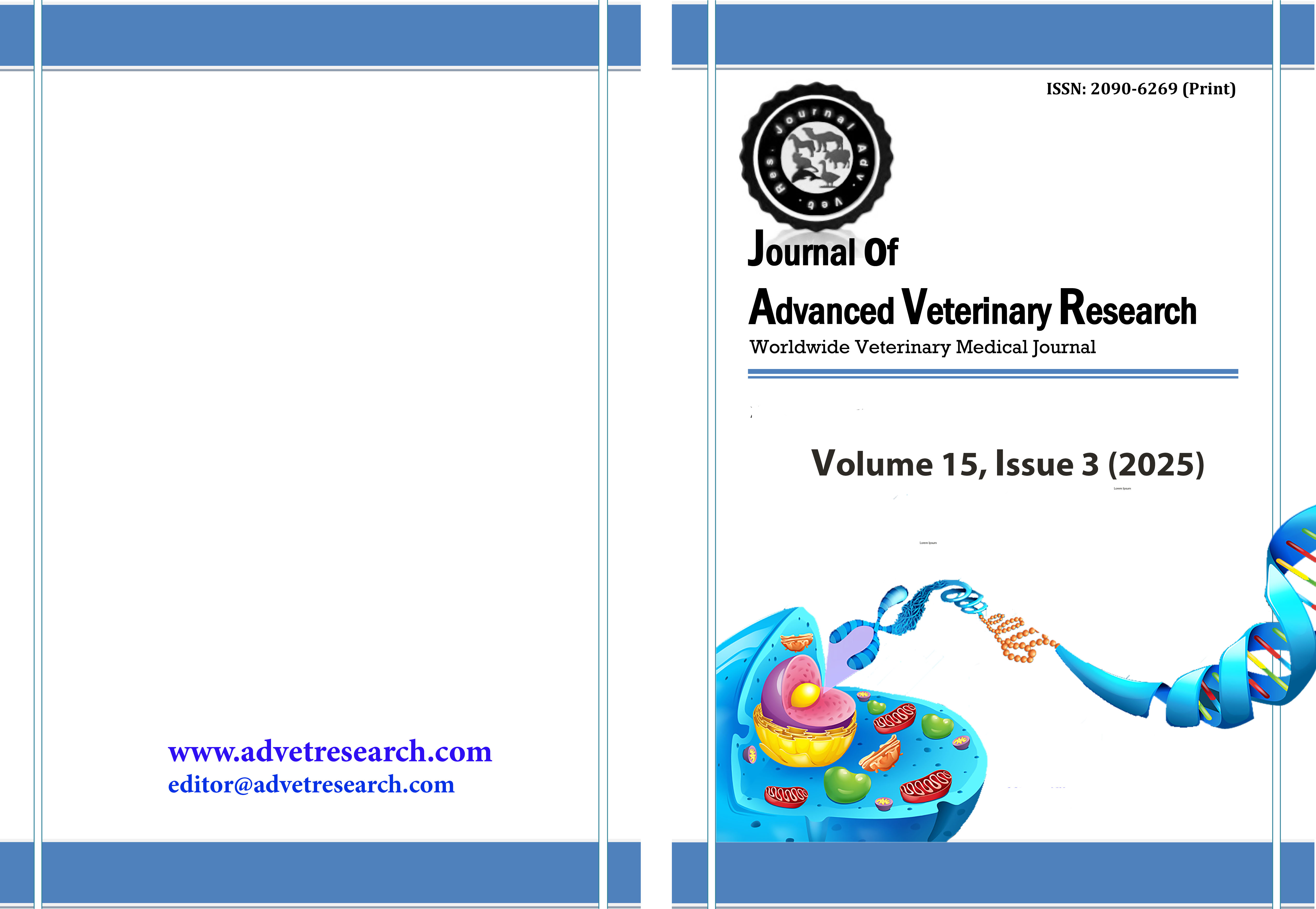Insights into some tick-borne pathogens in cows
Keywords:
Babesia, Bartonella, Haemotropic Mycoplasma, Theileria annulata, Vector-borne infectionsAbstract
Vector-borne infections are gaining attention in public health and veterinary fields due to their increasing effects on humans and animals. In livestock, multiple hemoparasite infections can cause severe anaemia, affecting health and productivity. Cows are especially susceptible to theileriosis, leading to symptoms like anaemia, jaundice, fever, and reduced milk production, particularly when combined with hemoplasma species.
This study investigated the molecular detection of Piroplasma (Babesia species, and Theileria species), haemotropic Mycoplasma, and Bartonella species in the blood of apparent healthy cows, including identification, sequencing, and phylogenetic analysis of positive samples. The total prevalence of Theileria annulata and Hemoplasma spp. was 27.6%, 15.4%, and 37.4%, 43.1% by microscopic examination and PCR, respectively, mixed infection with Theileria annulata and Hemoplasma spp were detected in 9.8% of examined samples by the two techniques. While Babesia spp. and Bartonella spp. never be detected neither by ME nor by PCR. The sequencing of six isolated Theileria spp. was identified as Theileria annulata. Meanwhile, eleven positive haemotropic mycoplasma samples revealed five Mycoplasma wenyonii and six ‘Candidatus Mycoplasma haemobos’. The sequence analysis of Theileria annulata, illustrated a high similarity of examined isolates to strains previously deposited in the GenBank. Moreover, Mycoplasma wenyonii and ‘Candidatus Mycoplasma haemobos’ sequence analysis showed Homology with strains from cattle, ticks, cats, and dogs.
It is concluded that T. annulata and bovine haemotropic mycoplasma infections are widespread in cattle. Our findings may be significant for the development of control programs.
Downloads
Published
How to Cite
Issue
Section
License
Copyright (c) 2025 Journal of Advanced Veterinary Research

This work is licensed under a Creative Commons Attribution-NonCommercial-NoDerivatives 4.0 International License.
Users have the right to read, download, copy, distribute, print, search, or link to the full texts of articles under the following conditions: Creative Commons Attribution-NonCommercial-NoDerivatives 4.0 International (CC BY-NC-ND 4.0).
Attribution-NonCommercial-NoDerivs
CC BY-NC-ND
This work is licensed under a Creative Commons Attribution-NonCommercial-NoDerivatives 4.0 International (CC BY-NC-ND 4.0) license




